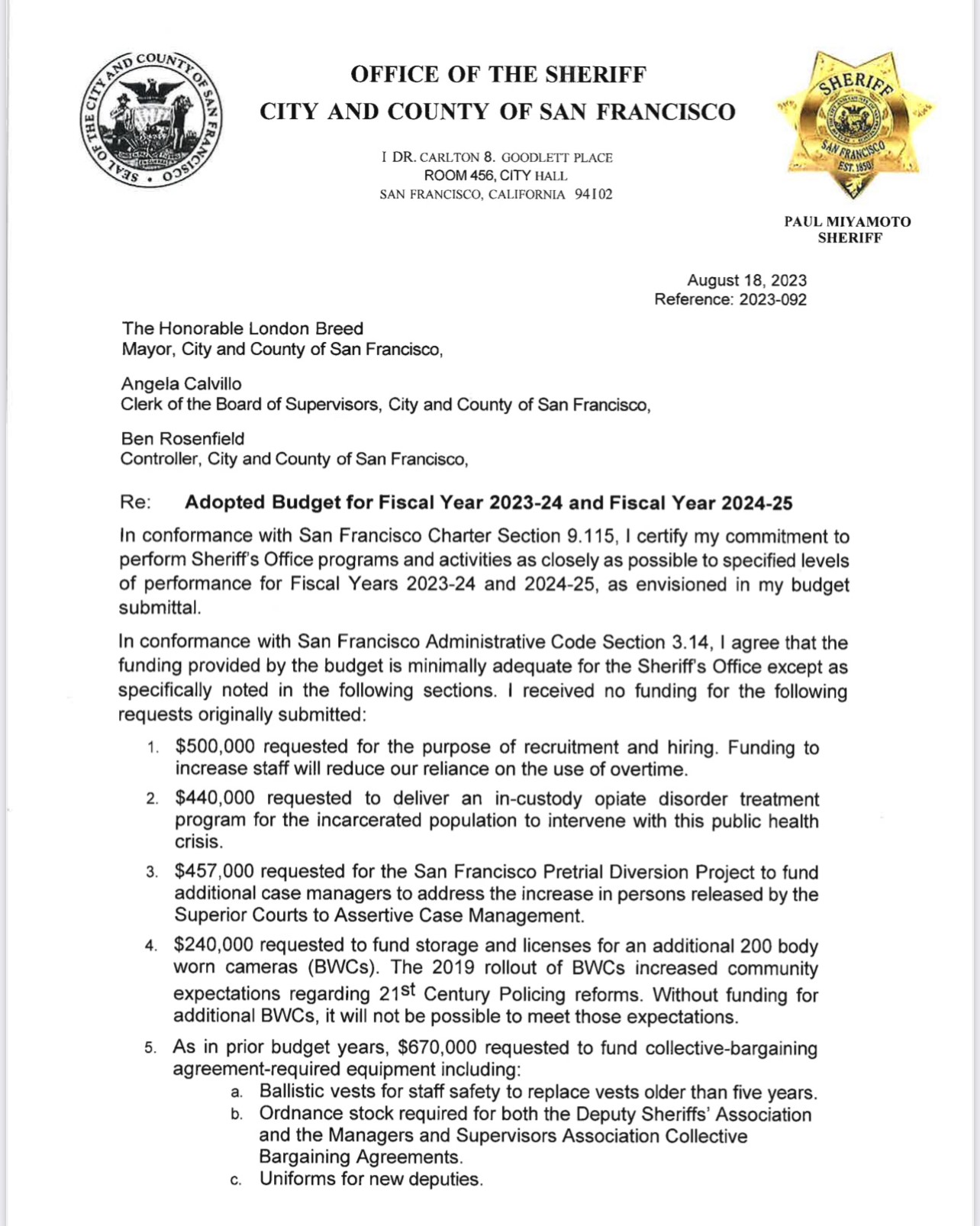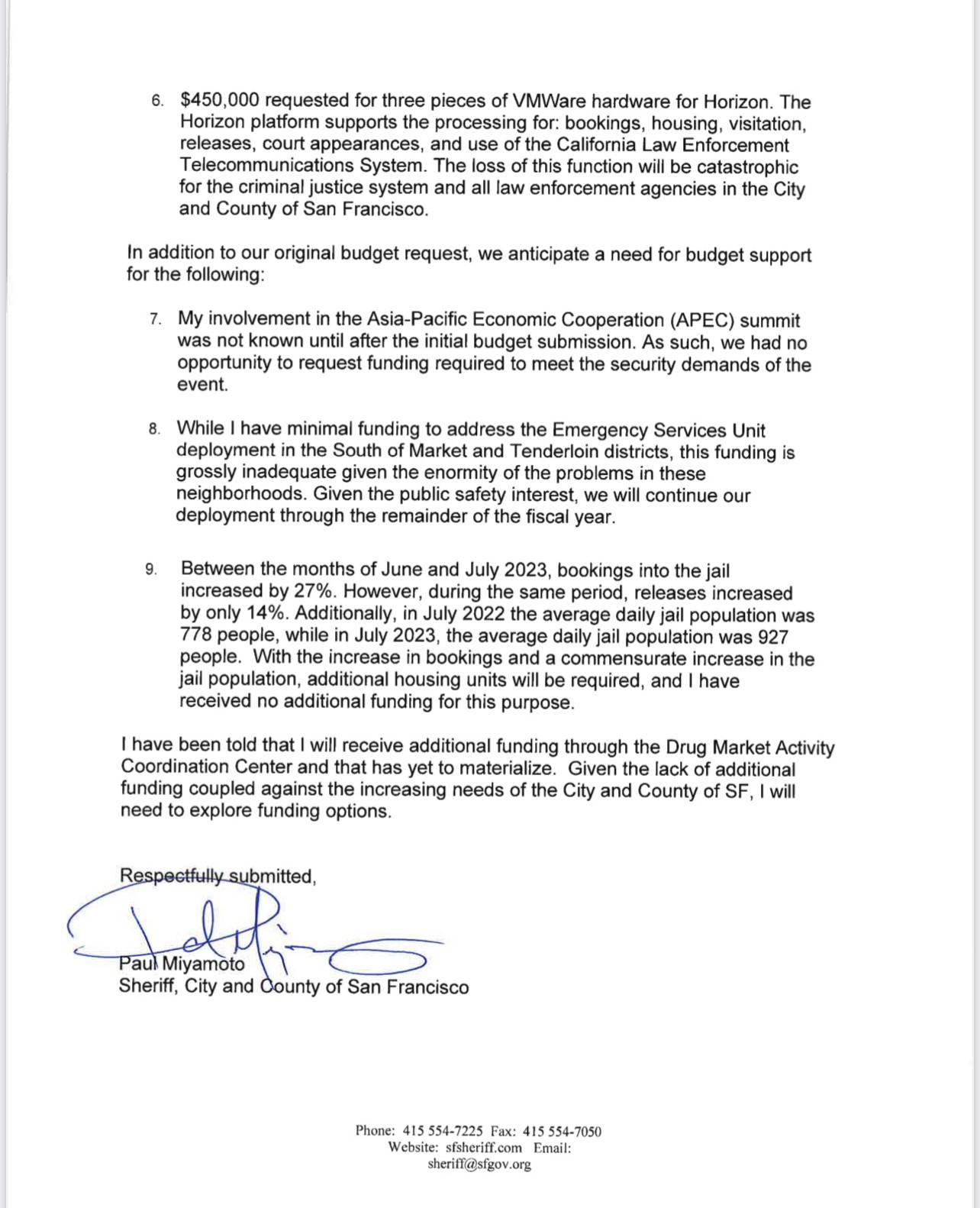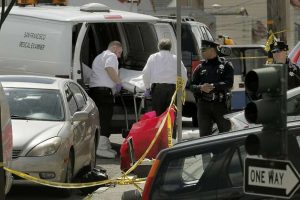FOR IMMEDIATE RELEASE
October 8, 2024
CONTACT: San Francisco Deputy Sheriffs’ Association
Phone: (415) 696-2428
Mayor Breed’s Reckless Policies Endanger Public Safety – Violent Felons Are Roaming Free
San Francisco, CA — The San Francisco Deputy Sheriffs’ Association is deeply alarmed by Mayor London Breed’s statements during her press conference on October 3rd, where she doubled down on a failed policy that is putting violent felons back on the streets. In her speech, Breed referred to ankle monitoring for violent criminals as an “important reform tool” — a shocking defense of a system that has already endangered countless lives.
The fact is, Breed’s so-called reforms have put violent offenders, including rapists, attempted murderers, and domestic abusers, back into our neighborhoods. These are not just petty criminals; these are dangerous individuals who should be behind bars, not walking our streets with nothing more than an ankle monitor. Recent investigations have revealed that nearly half of the criminals on this program violate the terms of their release — many cut off their devices and reoffend, some committing more violent crimes.
Mayor Breed’s policies are not just misguided, they are lethal. Every day, the people of San Francisco are left wondering: How many more lives must be lost before she realizes this experiment in “reform” is a failure? The purpose of our jails is to protect the public from violent offenders, yet Breed continues to fight for policies that put our community in harm’s way.
Under Breed’s watch, the San Francisco Sheriff’s Office has been defunded and understaffed, with hiring freezes crippling the department’s ability to even monitor those criminals on ankle monitoring. This lack of oversight is a ticking time bomb. The deputies who remain are overworked and overwhelmed, trying to keep track of hundreds of individuals who pose serious risks to public safety.
“Mayor Breed’s so-called reform policies have violently injured and almost killed innocent San Franciscans,” said Ken Lomba, President of the San Francisco Deputy Sheriffs’ Association. “By pushing to keep violent felons on the streets with ankle monitors, she has made our city less safe. We’ve seen tragic consequences because of these failed reforms, and it’s only a matter of time before more lives are lost. Our citizens deserve protection from dangerous criminals, not a revolving door that puts them back into our neighborhoods.”
How many more innocent lives will be lost because of Breed’s reckless decisions? Our community deserves better. The safety of San Franciscans should never take a back seat to so-called reforms that have already proven to fail. Mayor Breed’s policies are destroying the fabric of our city, and it’s time to stop putting violent felons back on our streets.
The San Francisco Deputy Sheriffs’ Association calls on Mayor Breed to end this dangerous program immediately and to take real action that prioritizes the safety of all San Franciscans.
Sources:
Defendants on ankle monitors in SF commit violations with little consequence
13x felon cuts off ankle monitor and puts man in intensive care with a shattered skull
About the San Francisco Deputy Sheriffs’ Association
The San Francisco Deputy Sheriffs’ Association (SFDSA) represents the men and women of the San Francisco Sheriff’s Office. Our mission is to promote public safety, support the needs of our members, and advocate for policies that keep our communities safe.
For more information, please contact us at (415) 696-2428.



 In recent times, the role of peace officers within the Medical Examiner’s Office has come under scrutiny. The issue at hand revolves around the authorization for these peace officers to carry firearms on duty. Our union, recognizing the potential risks and the impact on public safety, initiated a letter correspondence with the Medical Examiner’s Office. This article delves into the critical importance of arming these peace officers and highlights our recent response to address the matter.
In recent times, the role of peace officers within the Medical Examiner’s Office has come under scrutiny. The issue at hand revolves around the authorization for these peace officers to carry firearms on duty. Our union, recognizing the potential risks and the impact on public safety, initiated a letter correspondence with the Medical Examiner’s Office. This article delves into the critical importance of arming these peace officers and highlights our recent response to address the matter. designation within their agency and did not even acknowledge that they have California Peace Officer Standard of Training Certification, emphasizing their civilian-led approach. While we appreciate their perspective, it is crucial to recognize that peace officers play a pivotal role in enforcing laws, protecting the public, and responding to emergencies.
designation within their agency and did not even acknowledge that they have California Peace Officer Standard of Training Certification, emphasizing their civilian-led approach. While we appreciate their perspective, it is crucial to recognize that peace officers play a pivotal role in enforcing laws, protecting the public, and responding to emergencies.